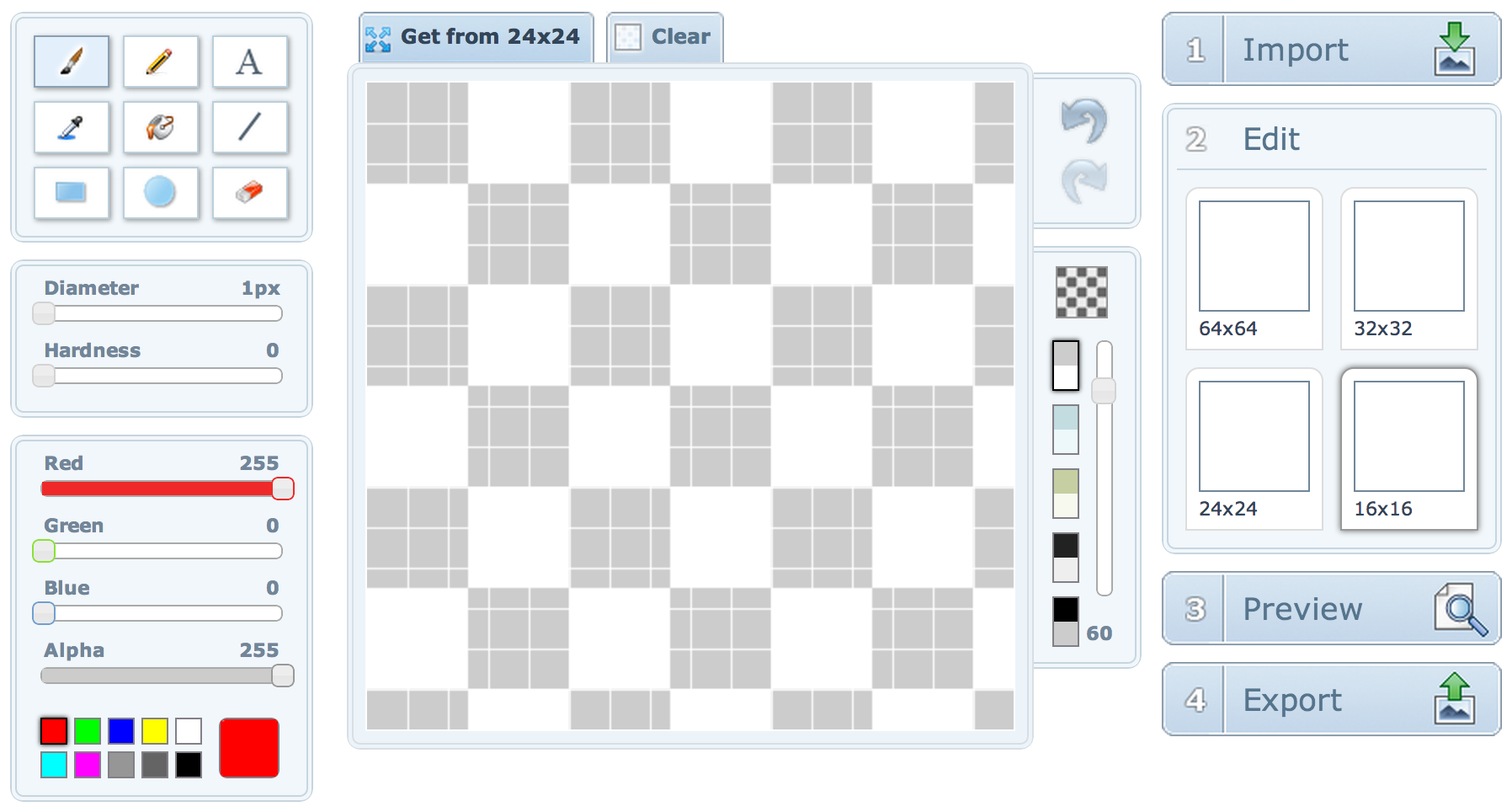
- #HOW TO MAKE A FAVICON H2MK HOW TO#
- #HOW TO MAKE A FAVICON H2MK GENERATOR#
- #HOW TO MAKE A FAVICON H2MK ANDROID#
- #HOW TO MAKE A FAVICON H2MK TV#

Once your favicon is ready, you must save it in the root folder of your website. Colour DepthĪ colour depth of 8-bit, 24-bit, or 32-bit is recommended. It is recommended to have favicons of 32×32, 57×57, or 76×76 or 96X96 pixels in size. Besides, the animated version of favicons is also suitable as a. ico format enables browsers to automatically detect the favicon.ico and display the favicon. ico format is widely accepted by the browsers and so, it is the commonly used formats. When you are creating a favicon, you must keep in mind the following key characteristics.
#HOW TO MAKE A FAVICON H2MK GENERATOR#
Websites such as, Favicon.ico & App Icon Generator or favicon.io are useful. You can also choose the easiest method to generate favicons using a website. You can use a program such as Adobe Photoshop to create a favicon. There are different methods to create a favicon.
Here you can see the favicon of this website. If there is no favicon in your website, then visitors would only see a generic web page icon. If you have developed a website, once it gets ready, you must design and add a favicon. In short, favicons are essential as it is associated with your brand identity. The favicon is also used by smartphone and tablets as an “App” icon when the user decides to pin your webpage on their home screen. The favicons help identify your website from others, when users have many tabs open, or they are browsing through Bookmarks bar or Browser History.

Favicons are significant identity icons that represent a website on the Address bar, Browser tabs, Browser history, Bookmark bar and even in the Favorites toolbar. But, if you want to see a more complete list of favicon images, make sure you take a look at this favicon cheat sheet on GitHub.A Favicon is a small, iconic image associated with a Website or Webpage. In general, developers and designers should strive to support as broad a variety of devices and operating systems as possible, but sometimes it just does not make sense. Why? Because they have been deprecated or because they are rarely relevant for the average web developer. Google TV, Chrome Web Store and pre-iOS 7 Apple Touch Icons. There are some favicon dimensions and formats that were not included in this article eg. The SVG can only be one layer, and safari requires the viewBox attribute of the SVG to be set to " 0 0 16 16". This favicon needs to be a 100% black SVG file with a transparent background. Unlike all other favicons, this icon is generated from an SVG image (Image credit: Michael Flarup / Apply Pixels) This might be a squircle, ellipsis, rectangle, rounded rectangle or teardrop shape.
#HOW TO MAKE A FAVICON H2MK ANDROID#
Since the introduction of adaptive icons in Android, websites added to the Android homescreen will mask the 192x192 design, so the icon takes shape after the user's preferred masking style.
#HOW TO MAKE A FAVICON H2MK HOW TO#
Android, Chrome and Opera How to create a favicon for Android, Chrome and OperaĪndroid, Chrome and Opera use the android-chrome-192x192.png and android-chrome-512x512.png that Google recommends. If not, you can provide additional sizes for the different Apple devices: You can get away with providing a 180x180 Apple Touch Icon that will automatically scale for the various iPhone and iPad sizes. This favicon will be displayed against the user's homescreen background (Image credit: Michael Flarup / Apply Pixels)Īpple favicons should be supplied in a PNG format. If you want an easy way to design and export all favicon sizes, take a look at the favicon template over at Apply Pixels. Today it's okay to provide the files in PNG format (except for the Safari Pinned Tab icon which should be provided as SVG). Previously favicons had to be provided in the ICO format. Below you can see a quick guide to the different formats and dimensions you'll need to supply to cover all of the main use cases. Favicon size cheatsheetĪs mentioned before, different contexts require different sized favicons. This version is used in grid-like bookmarks and shortcut menus where the browser or device masks the background, to achieve a uniform look in context. This version is shown in the URL bar, bookmarks lists and other places where the favicon appears next to your website URL or name. To ensure your favicon looks good in the many different contexts it's going to appear in, ideally you should provide two favicon styles: This makes it hard to predict how your favicon will be displayed to the end user.
#HOW TO MAKE A FAVICON H2MK TV#
Today, favicons are displayed in a lot of other contexts, including bookmarks lists, shortcut menus and even mobile and TV homescreens. When favicons were first introduced in Internet Explorer 5, they appeared in the URL bar and in the bookmarks list. Different backgrounds work well for different contexts (Image credit: Michael Flarup / Apply Pixels)


 0 kommentar(er)
0 kommentar(er)
